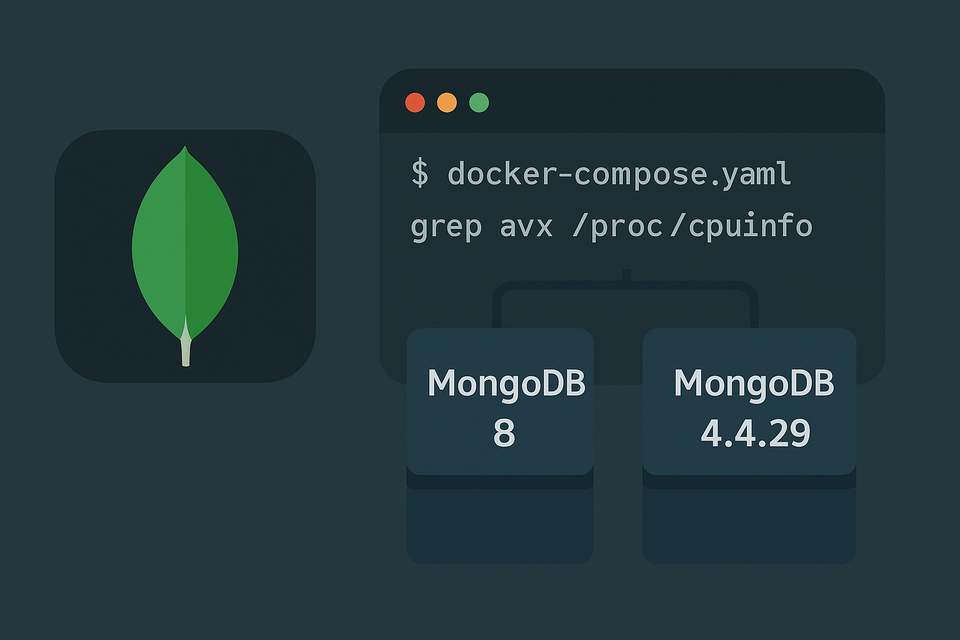[Docker] Jellyfin on Synology NAS
![[Docker] Jellyfin on Synology NAS](/content/images/size/w1200/2025/09/jellyfin.png)
Jellyfin is a free, open-source media server that’s easy to run on Synology. This post covers installation only using Docker Compose in Synology’s Container Manager. We won’t cover usage or library organization here.
TL;DR: Set PUID/PGID, prefer host networking for painless discovery/DLNA, and map /dev/dri if your NAS supports hardware acceleration.
Prerequisites
- Synology DSM with Container Manager enabled. Jellyfin is typically deployed on Synology via Docker. Jellyfin
- A folder layout like:
/volume1/docker/jellyfin/config(app config & metadata)/volume1/docker/jellyfin/cache(transcode/cache)/volume1/docker/jellyfin/media(later: point to your real library paths)
- Your Synology user’s PUID and PGID
- Tip: the first DSM user is often PUID
1026/ PGID100, but confirm via SSH:id <your_synology_username> - Using PUID/PGID lets the container write files as your NAS user (avoids root-owned files). LinuxServer
- Tip: the first DSM user is often PUID
Docker Compose (Host Network)
Save as docker-compose.yml:
services:
jellyfin:
image: lscr.io/linuxserver/jellyfin:latest
container_name: jellyfin
network_mode: host
environment:
- PUID=1026 # change to your UID
- PGID=100 # change to your GID
- TZ=Asia/Seoul # change to your timezone
volumes:
- /volume1/docker/jellyfin/config:/config
- /volume1/docker/jellyfin/cache:/cache
- /volume1/docker/jellyfin/media:/media # replace with your actual library roots
devices:
- /dev/dri:/dev/dri # optional; only if your NAS supports HW accel
restart: unless-stoppedWhy host networking? Jellyfin uses TCP 8096 (HTTP) / 8920 (HTTPS) and UDP 7359 for local client discovery plus 1900 for DLNA (SSDP). Host mode makes these broadcast-style features work without extra port wrangling. JellyfinDocker Hub
If You Need Bridge Mode Instead
If host mode isn’t possible, switch to bridge and publish the ports Jellyfin uses:
services:
jellyfin:
image: lscr.io/linuxserver/jellyfin:latest
container_name: jellyfin
ports:
- "8096:8096" # web UI (HTTP)
- "8920:8920" # (optional) HTTPS, if enabled in Jellyfin
- "7359:7359/udp" # client discovery
- "1900:1900/udp" # DLNA/SSDP
environment:
- PUID=1026
- PGID=100
- TZ=Asia/Seoul
volumes:
- /volume1/docker/jellyfin/config:/config
- /volume1/docker/jellyfin/cache:/cache
- /volume1/docker/jellyfin/media:/media
restart: unless-stoppedNote: DLNA and discovery rely on UDP broadcast; they’re simplest in host mode. Bridge works fine for the web app if you publish the ports shown above. Jellyfin
Deploy
From the folder containing docker-compose.yml:
docker compose up -d
When it’s running:
- Open the web UI at
http://<your-nas-ip>:8096 - Complete the initial setup wizard (admin user, libraries, etc.)
Reverse Proxy Later (Optional)
You can place Jellyfin behind Synology’s built-in reverse proxy and use a friendly URL like:
https://jellyfin.yourdomain.com
Point the reverse proxy to 8096 on the NAS (host mode) or the container’s published port (bridge). If you use a sub-path (e.g., /jellyfin), configure Jellyfin’s Base URL accordingly. JellyfinReddit
Folder Permissions (Important)
When you point Jellyfin to your real movie/TV folders, ensure the NAS user that matches your PUID/PGID has at least read permissions (and write, if you want Jellyfin to manage artwork/transcodes) on those shared folders. Otherwise, Jellyfin won’t see or write media and metadata correctly. LinuxServer
Optional: Enable Hardware Acceleration (Synology)
If your NAS exposes a supported iGPU (e.g., Intel Quick Sync), Jellyfin can offload decode/encode for lower CPU usage and smoother playback.
Requirements
- A NAS/CPU with VAAPI/QSV-capable graphics (common on Intel-based Synology models).
- Start the container with the device mapping:
devices: - /dev/dri:/dev/dri
Steps
- Verify the GPU device on the host
SSH into the NAS:ls -l /dev/driYou should see entries likecard0andrenderD128. - (If needed) Allow container access to render group
If logs show permission errors for/dev/dri/renderD*, find the device’s group ID:ls -n /dev/dri/renderD*Add that GID to the container:services: jellyfin: # ... group_add: - "109" # example; replace with your render group GIDRedeploy withdocker compose up -d. - Enable in Jellyfin
Jellyfin Dashboard → Playback → Hardware acceleration: choose VAAPI (or Intel QSV if available), then save. You do not need any paid license for hardware acceleration in Jellyfin. Jellyfin+1 - Test
Transcode a file (e.g., HEVC → H.264) and check the playback info/logs for VAAPI/QSV activity.
Troubleshooting
- No
/dev/dri: Your model/DSM may not expose the iGPU; reboot after major DSM updates to reload drivers. - Permission denied: Use the
group_addapproach above; avoidprivileged: trueexcept for quick testing. - Codec limits: Some chips decode more formats than they can encode; Jellyfin may use mixed HW/SW paths depending on media. Jellyfin
Common Gotchas
- Wrong PUID/PGID → configs/cache not writable; verify with
id <user>. LinuxServer - Bridge mode but no discovery/DLNA → publish 7359/udp and 1900/udp, or switch to host. Jellyfin
- Reverse proxy quirks with sub-paths → set Base URL (e.g.,
/jellyfin) if you’re proxying under a path. JellyfinReddit
That’s it—Jellyfin on Synology via Docker in a simple, production-friendly way. Installation done; how you use it is up to you!




